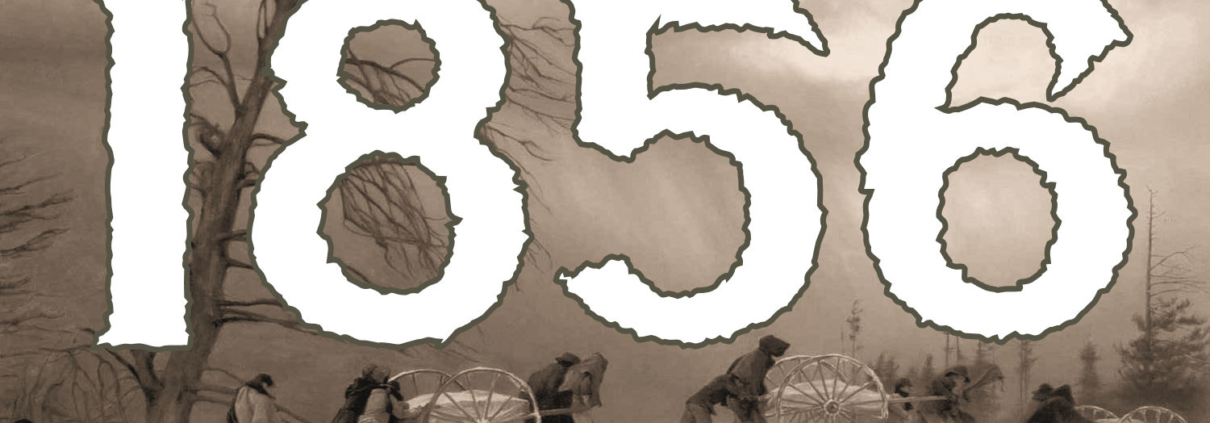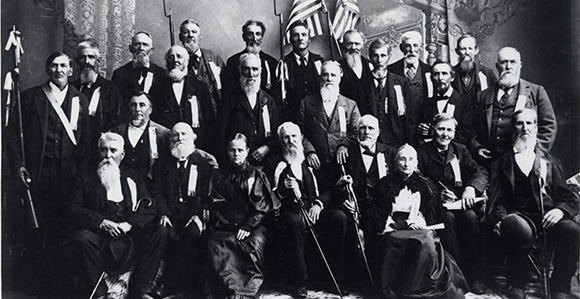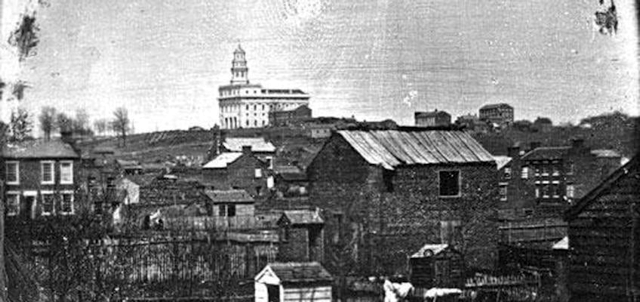Tag Archive for: Albert Smith
Getting to Know Albert Smith
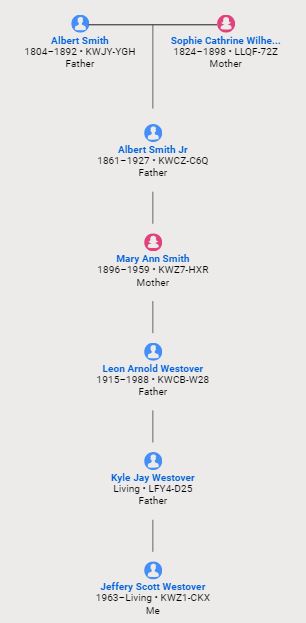
Ancestral Line to Albert Smith
The challenge stems from what to include and what to leave out in telling of his story. Thanks to Albert’s journals and to a long life lived so close to events of Church and Utah history there is a great deal of information. There is little of the 19th century Mormon experience that Albert didn’t have.
He came from a religious family. That led to his conversion sometime in the mid-1830s, a time that saw him join the Church in Ohio and one that put him on a slow path to Nauvoo.
His intent was to settle his family where the Saints were gathering in Missouri. What stopped him? Something called the extermination order by Governor Boggs.
Around 1840 Albert and his family arrived in Nauvoo. They joined the Nauvoo first ward.
He joined the Nauvoo Legion.
Albert was called on a mission to New York in 1842, returning nearly a year later in 1843.
He helped to build the Nauvoo Temple. He was friends with Wilford Woodruff. He knew the Prophet Joseph.
Both Albert, and his wife, Esther, received patriarchal blessings from Joseph Smith, Sr.
They were there when the Prophet and his brother, Hyrum, were martyred.
Like others in Nauvoo, they abandoned the home they had built and the land they had developed when they were pushed west by a mob. They received their endowments in the Nauvoo temple in January 1846, before being among some of the first to head west.
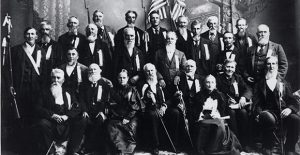
The 50th anniversary of the Mormon Battalion held 4 years after Albert died, in 1896.
They separated from their families for a full year, marched all the way to San Diego. Both would come home from the experience with severe injuries. Azariah would get thrown and kicked in the head by a horse and Albert was wounded when run over by a bull – three ribs years later were found to still be broken and separated from his sternum.
As they were headed to Salt Lake in 1847 they were told there was little food there and their company was admonished to go back to California. Azariah did return, for a season, working for a period at Sutter’s Fort where he would become part of the group that discovered gold there, ushering in the gold rush of California.
But Albert, anxious to return to his family, pressed on to Salt Lake, becoming one of the few pioneers of 1847 to arrive from the west.
Like all others, the Smiths set out to work to get settled in Salt Lake City. They had a terrible go of it the first few years. But there were miracles. In fact, the famous miracle of the seagulls actually happened to Albert Smith. He writes:
“When I got in sight of my grain I saw that it was covered with sea gulls. I stopped until they flew to another part of the field. What was my joy and surprise when I went on to the place and found every cricket destroyed. There was not one live one to be found while dead ones laid in heaps where the gulls had thrown them up when they done that they would fill themselves again and so continue to do. The Indians said that they were new birds that they never saw them before. I raised a large crop for 10 acres. I might mention a great many interposition of providence in our behalf without which we might have all perished.”
The next spring, Albert and family were called to be part of a pioneering group to settle Sanpete County – the first settlement south of Salt Lake to be established. I love the way Albert describes the general reaction to their new home:
“When we arrived at the place that is Manti, there was a large number in the camp that were wonderful disappointed with the place. Some went to Sever to see if they could find a better place to settle, but it was decided that this was the place where we was sent and that here we would settle.”
It would be his home for the next 43 years. There he would be known as “Father Smith”, a beloved member of the community who was older, most experienced in the church and faithful to the very core.
Again, all that he experienced in the coming years seemed to be drawn from the legendary experience of Mormonism in the 19th century.
It was there that Albert lost his first wife, Esther in 1856. He remarried almost right away and then, a short time later, he took on a plural wife who didn’t even speak English.
Almost overnight he went from having just 5 in his home to having 14 people under his care, including his disabled son Azariah, who was still suffering from fits of epilepsy from his head injury in California.
The crickets came back and the miracle of the seagulls did not repeat itself in Manti. Each year Albert would faithfully record his farm production and some years he grew nothing because of the pestilence or the lack of water. One year he records taking a trip by wagon to Bountiful to glean from fields of successful crops there, just so he could care for his family over the winter.
The life of plural marriage was not easy on Albert. In fact, after his second wife had pestered him enough for a divorce he gave it to her in 1865.
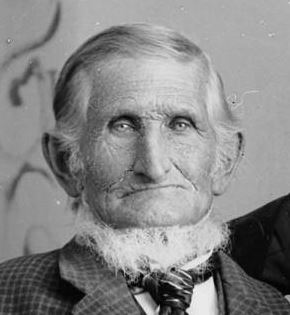 Throughout all this Albert lived faithfully and served in the ward and the community in Manti. He fought Indians and tried to be an influence to peace, an unpopular position to hold among anxious settlers. There were many skirmishes, and many people on both sides died. Albert preached for peace every time.
Throughout all this Albert lived faithfully and served in the ward and the community in Manti. He fought Indians and tried to be an influence to peace, an unpopular position to hold among anxious settlers. There were many skirmishes, and many people on both sides died. Albert preached for peace every time.
He continued his associations with Church leadership. When visiting authorities would visit he attended meetings and made a record of what they said. As first the temple arrived in St. George, Albert took note of the growing understanding of the doctrine of sealing families and vowed to take part.
He paid a professional genealogist to seek out the names of his ancestors and waited four long years for results. As the announcement was made for the Manti Temple Albert continued in those efforts in preparation, lending money and labor to that building as well.
To that end, Albert dedicated the last several years of his life to temple service and seeing that as many as 1500 of his family names were recorded as receiving ordinances under his hand or direction. He remained connected and devoted as well to his living descendants.
But for even all this I haven’t even touched on the lessons of the life of Albert Smith. That I will save for the video.
He was an extraordinary man, a man who lived the Gospel stubbornly, and a man whose understanding of the atonement led to one astonishing act of compassion that leads me to tears each time I think of it.
Right now, honestly, I’m trying to find a way to tell that part of Albert’s story.
It is tender. It is sacred. It is a necessary and, as far as I can tell, so far an untold story of our family history that needs to be shared and appreciated.
That part of Albert’s story is NOT told in his journal. Nevertheless, I would encourage you to head over to WestoverGenealogy.org to read the many pages of Albert’s journal.
I believe there is great value in getting to know him through his unique form of expression and in his own telling of his story.
The Harm in Do No Harm
During a presentation at Roots Tech about writing histories my sister-in-law shared some direction the presenter gave about writing history of family members with less-than-sterling details in their lives. The presenter urged family historians to “do no harm” when writing histories.
This spurred considerable discussion between us. It is a thought that continues to trouble me.
Every family is going to have their share of horse thieves, children born out of wedlock, and records of family members found in jails and insane asylums.
Do we skip over such facts out of respect for the idea of “do no harm”?
This as a growing problem in a lot of family histories I see and it swings both ways. There is a tendency to over-glorify accomplishments in the lives of some ancestors or to simply omit significant yet unflattering aspects of their stories.
I believe this is all wrong.
Let me share an ongoing family story of some sensitivity going on in the media right now before our very eyes to illustrate what I’m saying.
A couple of months ago I was drawn to a book I saw on Amazon called “Educated”.
It piqued my interest for two reasons. It purports to be the memoir of a homeschooled child whose story takes her from an isolated Idaho location all the way to Cambridge. This interested me because we homeschooled our children for many years, a decision that remains embroiled in some controversy and regret to this day.
The second reason it interested me was because of who authored it. The book was written by Tara Westover.
Anyone named Westover from Idaho has to be a fairly close relation. (Though I admit I don’t know yet what our connection is).
Tara’s book has raced to the top of the New York Times Bestseller list and has placed her in front of worldwide media. Her story has been described as a “brutal, one-of-a-kind memoir”, a tale of her upbringing in a survivalist family with elements of abuse against a background of “fundamentalist Mormonism” and an anti-government mindset.
I haven’t read the book yet.
But I have seen or listened to many of Tara’s interviews, describing for herself the conditions of her upbringing and the education she has gained in the halls of learning after she left her home and family.
Living as we do in Cache Valley we frequently get asked about other Westover families that have been here for generations.
Until recently, I did not recognize one of the Westover names many have mentioned to us many times before in our five years of living here. They are, as it turns out, the names of Tara’s parents.
They operate a popular business in south east Idaho, not far from where we live, and many people here in Cache Valley know them, though we do not.
In a local paper this week we read with some interest a public response Tara’s parents have delivered via their lawyer to the media. As you might expect, they have taken great exception to Tara’s representation of their parenting and her upbringing.
All of this, of course, will remain available for the world and the descendants of this branch of the Westover family for generations to come.
It is a rare thing. Unlike most people, past and present, there will be a record left of the same events presented through different sets of eyes.
They do not agree.
In a way, I am a bit envious of this fact. The records these Westovers are leaving is far more honest than I think most histories ever get.
I do not doubt Tara’s story. In fact, I believe her story has tremendous value because it is a first person account. It is her view. It happened to her. It is her story.
I also do not doubt the few things said by her parents. They have their view and it is no less valuable than Tara’s.
That’s history. Sometimes history is hard.
While you would hope for family harmony in all things I doubt you would ever find the same events told the same way by everyone that was there. Is that the point of history anyway?
Family relationships are complicated. The stuff-of-life is the reality we all live and generations rarely agree in upbringing and remembrance.
For my money, whether it is my history or anyone else’s in my family, I’d rather have the truth.
Why do I bring this all up?
Fear. Concern. And truth.
Over the course of the next several months I will be posting more on the life of Albert Smith. It contains far deeper elements than I anticipated.
His is a long and complicated story. I have details to share that I believe not many know about. I certainly didn’t know about them from all I had heard and read over the years before I engaged in active, substantive research of his life.
To fully communicate and understand the story I feel there is some background that is needed on some very difficult topics.
Polygamy. Blood Atonement. The Mountain Meadows Massacre. Danites. The Adam-God theory.
Adoption. Rape. Infidelity. The founding of the Relief Society.
Joseph Smith. Emma Smith. Wilford Woodruff. Daniel H. Wells.
Interested?
Yes, it is an interesting story.
It is a story of heartbreak, a story of redemption, and a story of goodness, faith and hope that will bring you to tears (well, it had that affect on me).
Truth does that.
It is vital in recounting the history of ourselves and of our ancestors. Truth is what teaches the real lessons.
Albert Smith left an incredible record spanning 50 years of his life and much of it was written in his own hand.
But he did not tell the full story.
How I wish others around him – eye-witnesses with their own take on the situation – had left a record too.
It would have helped us arrive at the truth – and thus the real lessons – far sooner than we have.
Stay tuned.

